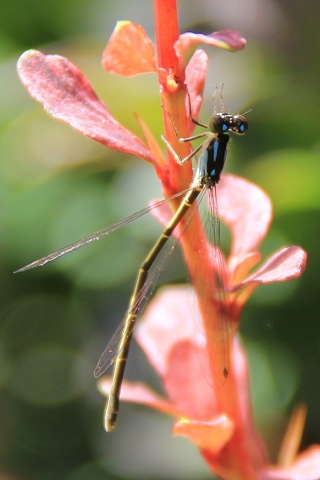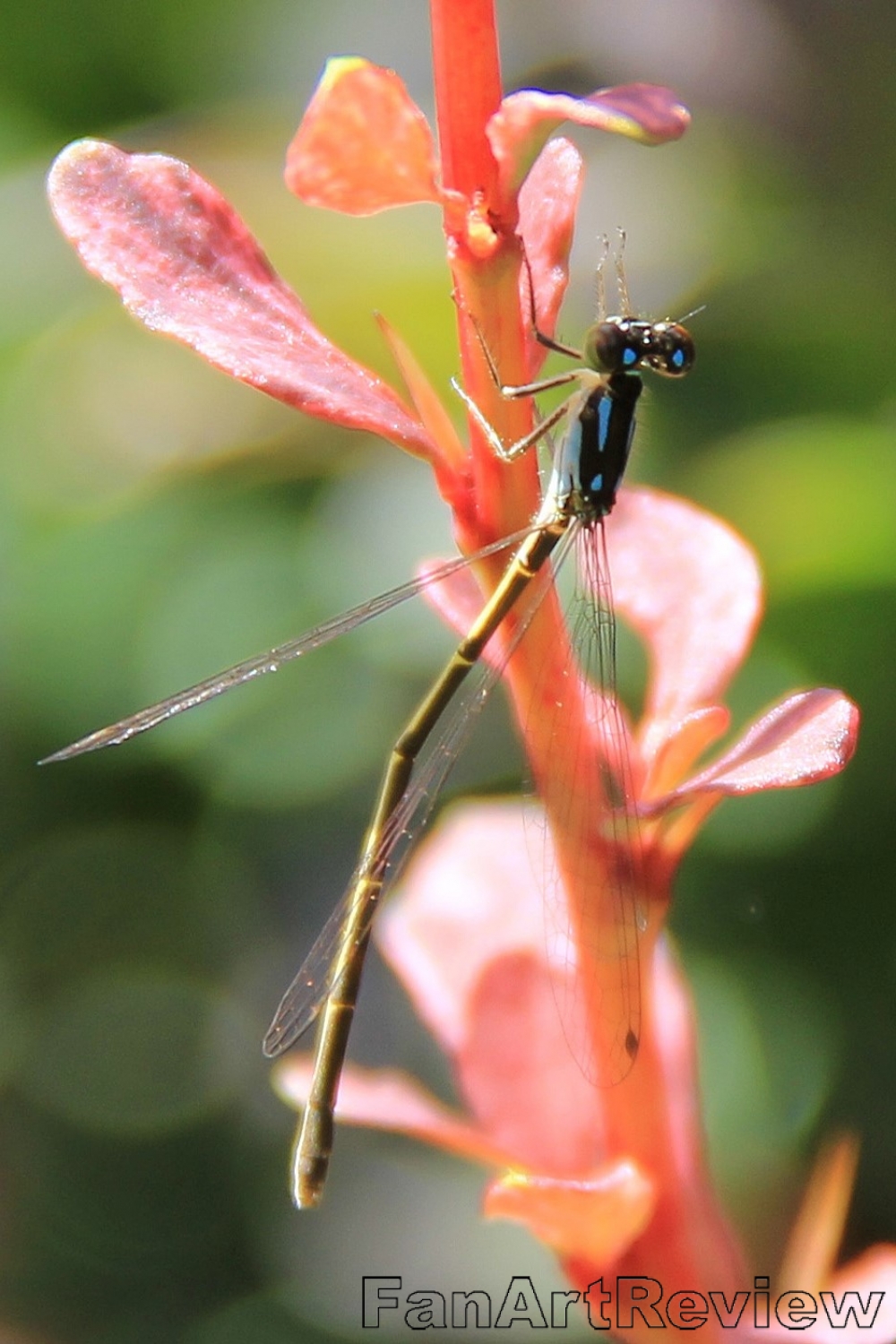Category: Nature Photography
Post Type:
Photography
Mixed Media: None | Shot, slight crop, sharpen
Pays
one point
and 2 member cents.





© Copyright 2025. ABG Photography All rights reserved. Registered copyright with FanArtReview.
ABG Photography has granted FanStory.com, its affiliates and its syndicates non-exclusive rights to display this work.
Posted: August 11, 2017
      |
Damsel Not in Distress
Damselfly
by ABG Photography
Interested in this? Contact The Artist
Macro Photos Contest Entry
You can own this. Offers accepted. Information
One of my all time favorite subjects to photograph are dragon and damselflies. The damselflies are the real challenge, because they are, for the most part, about the size and width of a sewing needle and are very difficult to outright spot. Once I was laying down in a bed of grass and spotted one hanging on to a blade of grass, if I had been standing the chances are very high that I would have missed it. This particular one was clinging to a Barberry bush branch/twig. He looks like an alien, doesn't he? Just the sun illuminating his effervescence.
Damselflies are insects of the suborder Zygoptera in the order Odonata. They are similar to dragonflies, which constitute the other odonatan suborder, Anisoptera, but are smaller, have slimmer bodies, and most species fold the wings along the body when at rest. An ancient group, damselflies have existed since at least the Lower Permian, and are found on every continent except Antarctica.
All damselflies are predatory; both nymphs and adults eat other insects. The nymphs are aquatic, with different species living in a variety of freshwater habitats including acid bogs, ponds, lakes and rivers. The nymphs moult repeatedly, at the last moult climbing out of the water to undergo metamorphosis. The skin splits down the back, they emerge and inflate their wings and abdomen to gain their adult form. Their presence on a body of water indicates that it is relatively unpolluted, but their dependence on freshwater makes them vulnerable to damage to their wetland habitats.
Some species of damselfly have elaborate courtship behaviour. Many species are sexually dimorphic, the males often being more brightly colored than the females. Like dragonflies, they reproduce using indirect insemination and delayed fertilization. A mating pair form a shape known as a "heart" or "wheel", the male clasping the female at the back of the head, the female curling her abdomen down to pick up sperm from secondary genitalia at the base of the male's abdomen. The pair often remain together with the male still clasping the female while she lays eggs within the tissue of plants in or near water using a robust ovipositor.
CAMERA - Canon EOS 60D
F-STOP - f/5.6
EXPOSURE - 1/200 sec
ISO - 160
EXPOSURE BIAS - 0 step
FOCAL LENGTH - 135 mm
MAX APERTURE -
SHOOTING MODE - Automatic
HAND HELD - Yes
TRIPOD - No
MONO-POD - No
FLASH - No
by ABG Photography Interested in this? Contact The Artist
Damselflies are insects of the suborder Zygoptera in the order Odonata. They are similar to dragonflies, which constitute the other odonatan suborder, Anisoptera, but are smaller, have slimmer bodies, and most species fold the wings along the body when at rest. An ancient group, damselflies have existed since at least the Lower Permian, and are found on every continent except Antarctica.
All damselflies are predatory; both nymphs and adults eat other insects. The nymphs are aquatic, with different species living in a variety of freshwater habitats including acid bogs, ponds, lakes and rivers. The nymphs moult repeatedly, at the last moult climbing out of the water to undergo metamorphosis. The skin splits down the back, they emerge and inflate their wings and abdomen to gain their adult form. Their presence on a body of water indicates that it is relatively unpolluted, but their dependence on freshwater makes them vulnerable to damage to their wetland habitats.
Some species of damselfly have elaborate courtship behaviour. Many species are sexually dimorphic, the males often being more brightly colored than the females. Like dragonflies, they reproduce using indirect insemination and delayed fertilization. A mating pair form a shape known as a "heart" or "wheel", the male clasping the female at the back of the head, the female curling her abdomen down to pick up sperm from secondary genitalia at the base of the male's abdomen. The pair often remain together with the male still clasping the female while she lays eggs within the tissue of plants in or near water using a robust ovipositor.
CAMERA - Canon EOS 60D
F-STOP - f/5.6
EXPOSURE - 1/200 sec
ISO - 160
EXPOSURE BIAS - 0 step
FOCAL LENGTH - 135 mm
MAX APERTURE -
SHOOTING MODE - Automatic
HAND HELD - Yes
TRIPOD - No
MONO-POD - No
FLASH - No
Mixed Media: None | Shot, slight crop, sharpen
 Recognized |


Damselfly
by ABG Photography

You need to login or register to write reviews. It's quick! We only ask four questions to new members.
© Copyright 2025. ABG Photography All rights reserved. Registered copyright with FanArtReview.

ABG Photography has granted FanStory.com, its affiliates and its syndicates non-exclusive rights to display this work.

